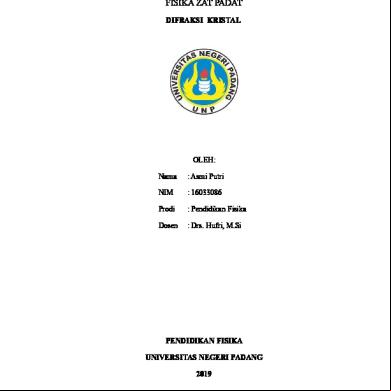The Fundamental Credit Analysis Approach Consists Of.docx 2m6t32
This document was ed by and they confirmed that they have the permission to share it. If you are author or own the copyright of this book, please report to us by using this report form. Report 3b7i
Overview 3e4r5l
& View The Fundamental Credit Analysis Approach Consists Of.docx as PDF for free.
More details w3441
- Words: 243
- Pages: 3
The fundamental credit analysis approach consists of:
8 steps 12 steps 4 steps
When analysts assess the exposure at default they obtain: Only an understanding of the type of financing Only an understanding of the intended use of the loan Both option 1 and option 2
When estimating the probability of default:
An analysis of the firm’s financial health is crucial An analysis of the peers’ financial health is crucial Neither option 1 nor option 2
When estimating the probability of recovery: The available security and collaterals are assessed and liquidation value measured Book value of equity is used as indicator of the liquidation value Neither option 1 nor option 2
Credit ratings is purely based on: Qualitative data Quantitative data All of the above
According to Standard & Poor’s rating scheme a BBB-rating corresponds to: A speculative grade An investment grade It depends – sometimes an investment grade and other times a speculative grade
Forecasting is a better and more efficient way of assessing the credit risk than using financial ratios: False Correct It depends – if resources are scarce a credit rating based on financial ratios may prove more cost-efficient
Creditors generally prefer a collateral based on intangible assets as compared to tangible assets: Correct
False None of the above
The credit spread of a B-rating is between: 3.2%-13.2% 0.8%-3.6% 0.6%-1.9%
According to Altman’s Z-score the chances of bankruptcy is high when the Z-score is: Below 1.81 Above 2.99 Between 1.81-2.99
8 steps 12 steps 4 steps
When analysts assess the exposure at default they obtain: Only an understanding of the type of financing Only an understanding of the intended use of the loan Both option 1 and option 2
When estimating the probability of default:
An analysis of the firm’s financial health is crucial An analysis of the peers’ financial health is crucial Neither option 1 nor option 2
When estimating the probability of recovery: The available security and collaterals are assessed and liquidation value measured Book value of equity is used as indicator of the liquidation value Neither option 1 nor option 2
Credit ratings is purely based on: Qualitative data Quantitative data All of the above
According to Standard & Poor’s rating scheme a BBB-rating corresponds to: A speculative grade An investment grade It depends – sometimes an investment grade and other times a speculative grade
Forecasting is a better and more efficient way of assessing the credit risk than using financial ratios: False Correct It depends – if resources are scarce a credit rating based on financial ratios may prove more cost-efficient
Creditors generally prefer a collateral based on intangible assets as compared to tangible assets: Correct
False None of the above
The credit spread of a B-rating is between: 3.2%-13.2% 0.8%-3.6% 0.6%-1.9%
According to Altman’s Z-score the chances of bankruptcy is high when the Z-score is: Below 1.81 Above 2.99 Between 1.81-2.99










